When we think of the strongest animals on the planet, usually a gorilla, elephant or lion comes to mind. But strength in animals is measured in different ways. Some are heavy lifters despite their small size. Some have powerful grips, high-pressure bites, deadly venom or can withstand temperatures that would be fatal to a human.
All of these “superpowers” make these animals incredibly strong — and some very dangerous if threatened. These are the 25 strongest animals in the world.
Grizzly Bear
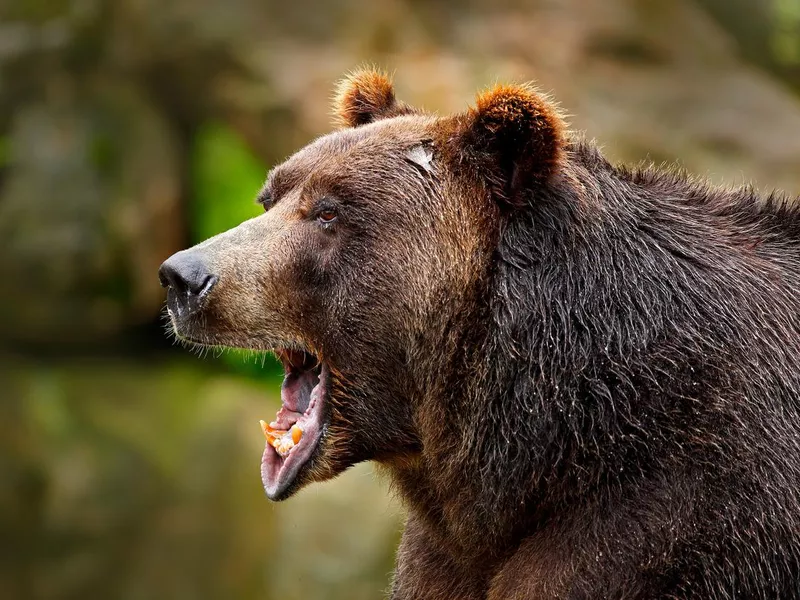
Ondrej Prosicky / Getty Images
Size: Up to 500 pounds
Lifespan: 10-35 years
Where to find them: The Americas, Europe, Asia
Bottom Line: Grizzly Bear

ErikMandre / Getty Images
Grizzly bears can lift twice their weight and have a body built for taking down large prey. Despite their massive size, they can reach speeds of 30 mph when running.
They are intelligent animals that are very protective and will risk their own lives to defend their cubs, making them highly dangerous to humans.
Gorilla
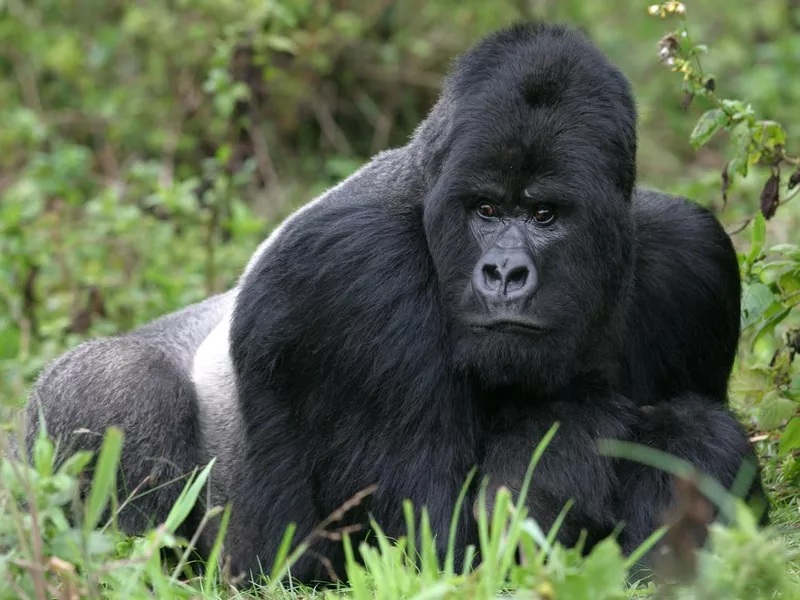
erwinf / Getty Images
Size: 310-450 pounds
Lifespan: 30-50 years
Where to find them: Central Africa
Bottom Line: Gorilla
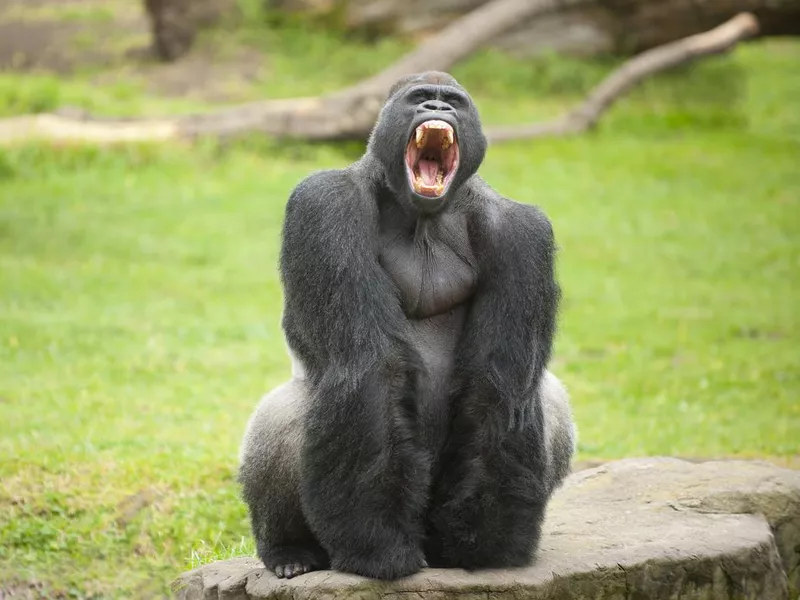
nathanphoto / Getty Images
Gorillas are our closest living relative. They share 95 to 98 percent of our DNA. But their ability to lift 10 times their own weight makes them far more powerful than any human.
Gorillas are also quite intelligent. They show emotions such as love, grief and compassion, and some can even learn basic sign language skills.
Eagle

ca2hill / Getty Images
Size: 1-15 pounds
Lifespan: 35 years
Where to find them: Eurasia, Africa, Australia, the Americas
Bottom Line: Eagle
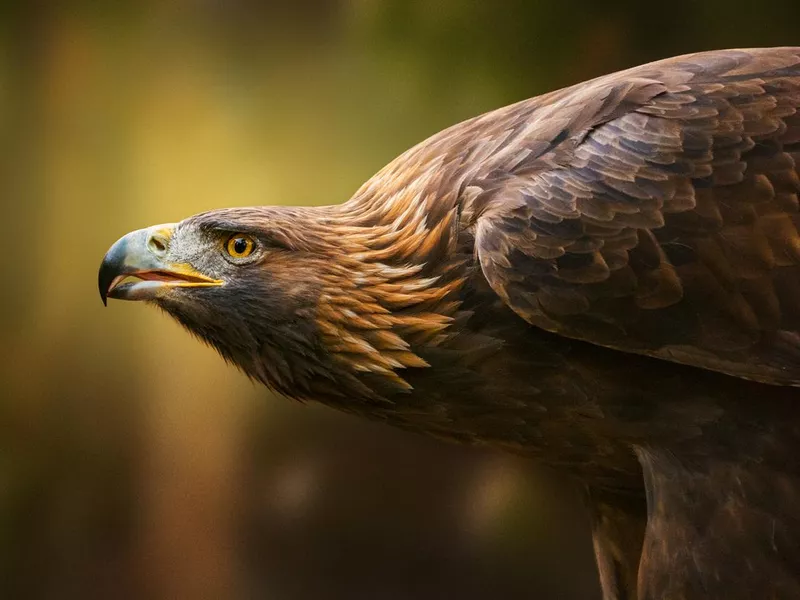
Zocha_K / Getty Images
Ranked as the strongest bird on the planet, an eagle can lift something that is four times their body weight while in flight. Their incredible vision is also one of their greatest strengths, with the ability to see prey 2 miles away.
An eagle’s eyesight is four to five times better than that of humans.
Siberian Tiger

Zocha_K / Getty Images
Size: 475+ pounds
Lifespan: 10-14 years
Where to find them: Russia, China, North Korea
Bottom Line: Siberian Tiger
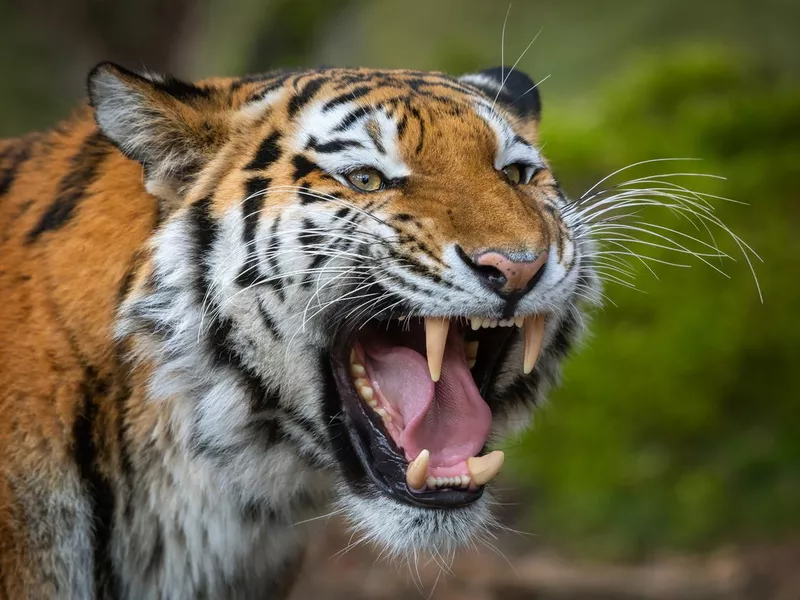
Andyworks / Getty Images
One of the most feared predators on the planet, the Siberian tiger has a bite force of 1,000 pounds per square inch and can take down its prey with a single bite to the neck. They’re also able to carry prey twice their own weight up a tree.
Even though tigers are stocky, heavy animals, they are also fast — some reaching speeds up to 40 mph when chasing after prey.
Musk Ox

sarkophoto / Getty Images
Size: 400-900 pounds
Lifespan: 12-20 years
Where to find them: Arctic North America to Greenland
Bottom Line: Musk Ox
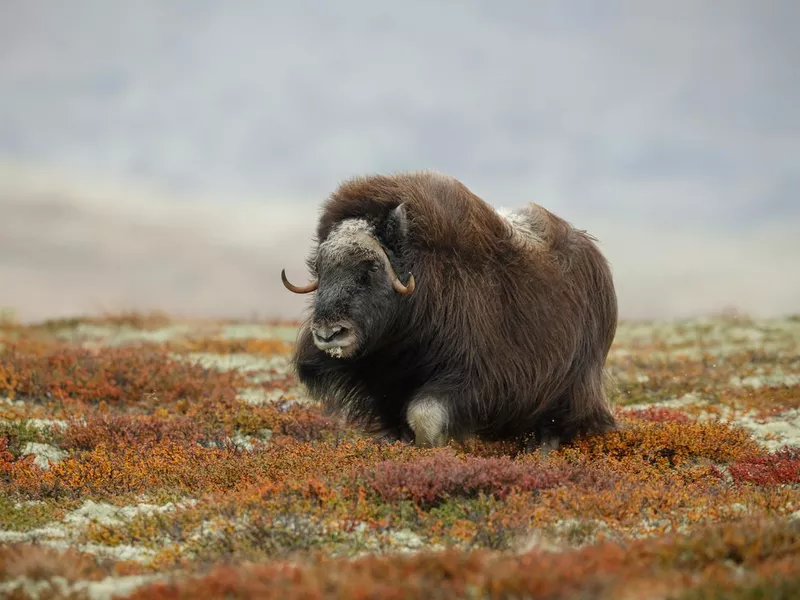
Neil_Burton / Getty Images
Although smaller than a bison, a musk ox is strong enough to pull 1.5 times its own weight. They are stocky animals with large heads and long hairs that almost reach the ground.
Their wool-like hair is the rarest in the world and highly valued.
African Bush Elephant
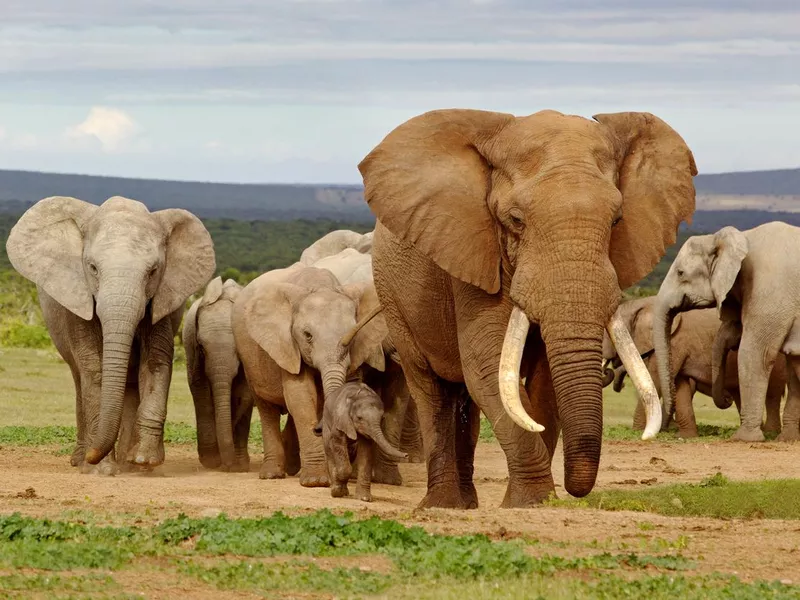
ZambeziShark / Getty Images
Size: 13,000 pounds (males); 6,600 pounds (females)
Lifespan: 60-70 years
Where to find them: Southern and eastern African countries
Bottom Line: African Bush Elephant
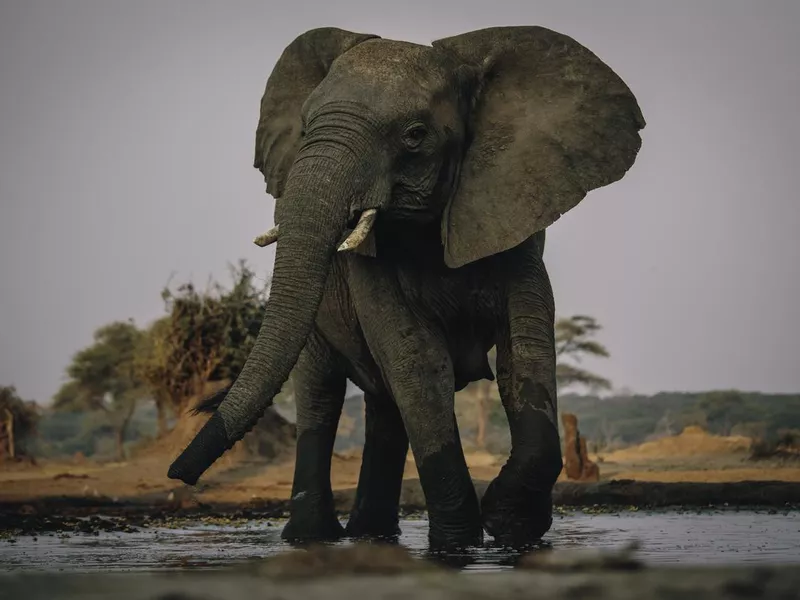
fotografie-kuhlmann / Getty Images
The elephant is the strongest mammal on the planet and can lift 7 tons. Its trunk is especially strong, enabling it to raise calves, uproot trees, spray a gallon of water at a time or do something as delicate as picking a flower.
They are intelligent, friendly creatures with long memories but can become aggressive if provoked.
Blue Whale

eco2drew / Getty Images
Size: 200 tons
Lifespan: 80-90 years
Where to find them: Canada and the eastern U.S.
Bottom Line: Blue Whale
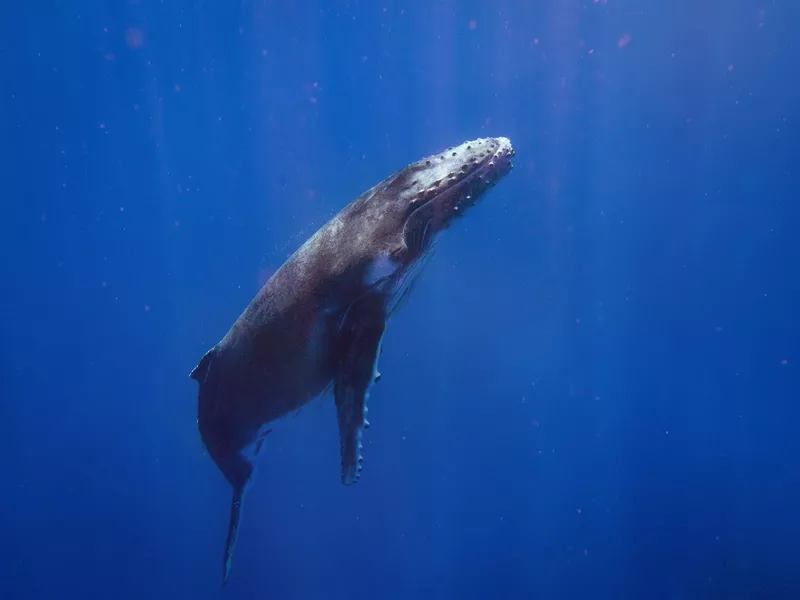
HQuality Video / Getty Images
The largest and one of the most powerful marine mammals globally, blue whales can move 30 tons through water and travel at speeds of 23 mph for long distances.
This amazing creature communicates through low-frequency pulses, moans and groans and can hear other whales 1,000 miles away.
Anaconda

wrangel / Getty Images
Size: 550 pounds (30-feet long)
Lifespan: 10 years
Where to find them: Northern regions of South America
Bottom Line: Anaconda

Mark Kostich / Getty Images
The anaconda is one of the heaviest and strongest snakes on the planet. They can squeeze their prey to death with a crushing force of 90 pounds per square inch. With the ability to stretch their jaws wide, anacondas can also swallow their prey whole.
Surprisingly, they are not venomous snakes; their power lies in their squeeze.
Saltwater Crocodile
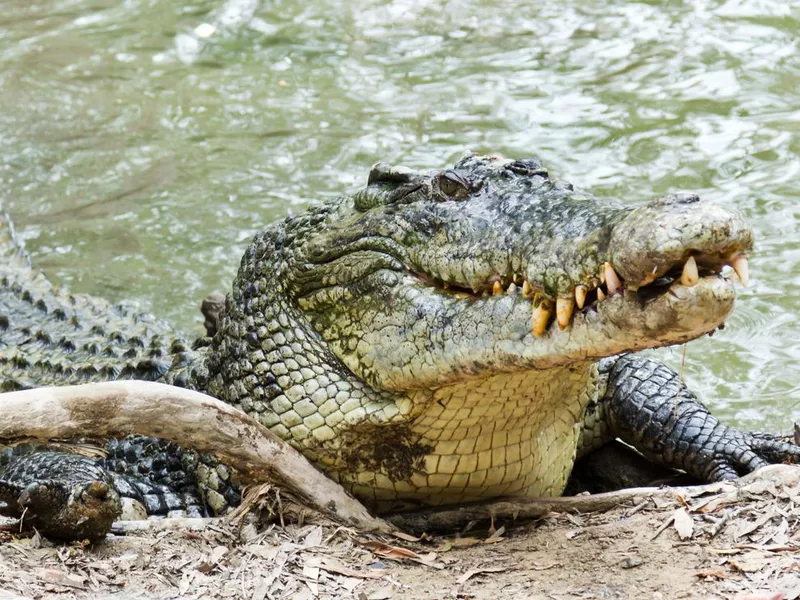
DianaLynne / Getty Images
Size: 900-1,200 pounds (male); 170-230 pounds (female)
Lifespan: 70 years
Where to find them: Southeast Asia, eastern India and northern Australia
Bottom Line: Saltwater Crocodile
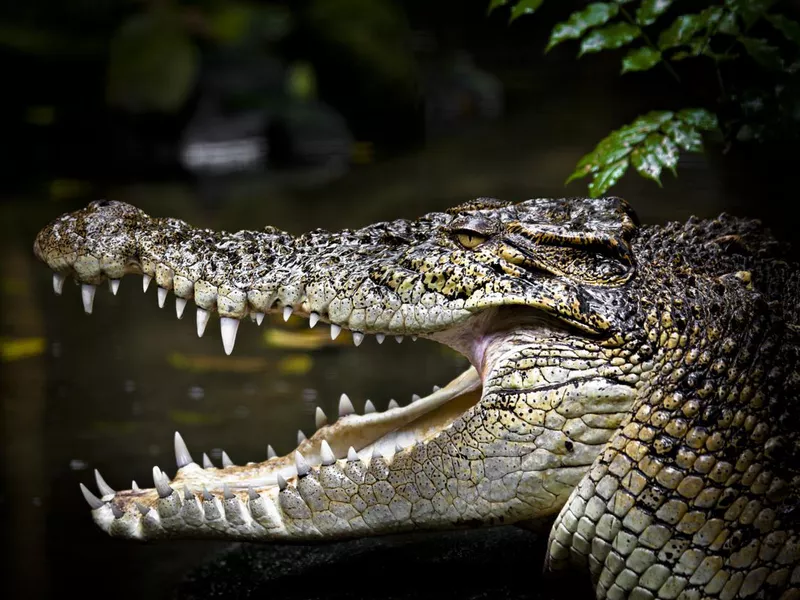
35007 / Getty Images
This massive croc is known for having the strongest bite force (around 3,700 pounds) of all animals on the planet.
They are also one of the world’s heaviest reptiles and can move at 15 to 18 mph in their saltwater habitat.
Dung Beetle
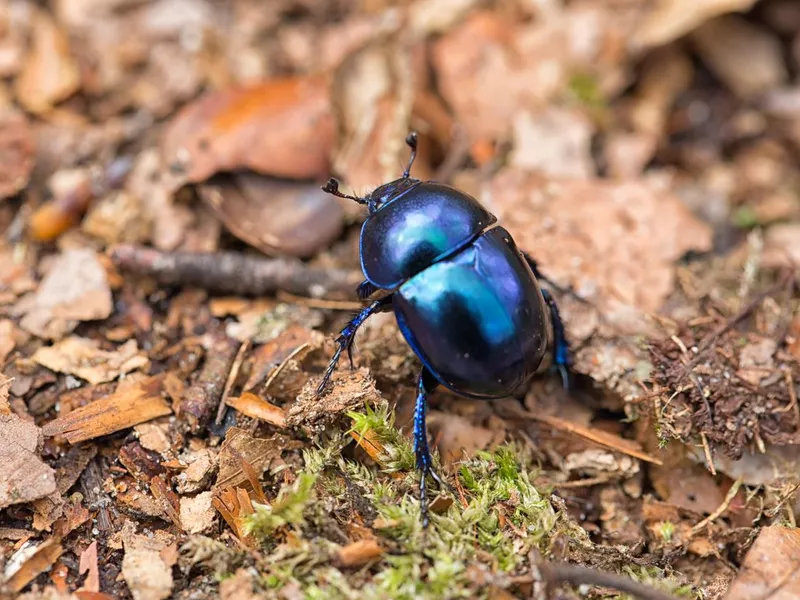
Angelika / Getty Images
Size: About 1 inch
Lifespan: Up to 3 years
Where to find them: Every continent except Antarctica
Bottom Line: Dung Beetle

CreativeNature_nl / Getty Images
The dung beetle is the most powerful insect in the world, with its ability to pull 1,141 times its own body weight. This is the equivalent of a single human moving six full, double-decker buses.
Dung beetles use their strength to roll large balls of dung back to their homes.
Lion

Zocha_K / Getty Images
Size: 420 pounds (male); 280 pounds (female)
Lifespan: 8-10 years
Where to find them: Africa
Bottom Line: Lion

SeymsBrugger / Getty Images
One of the strongest animals in their habitat, lions outmatch the cheetah and leopard when it comes to strength. They can kill a hyena with one swipe of their massive paw and eat up to 88 pounds in a single meal!
Lions are also the only wild cats that roar together, which can be heard as far as 5 miles away.
Leafcutter Ant
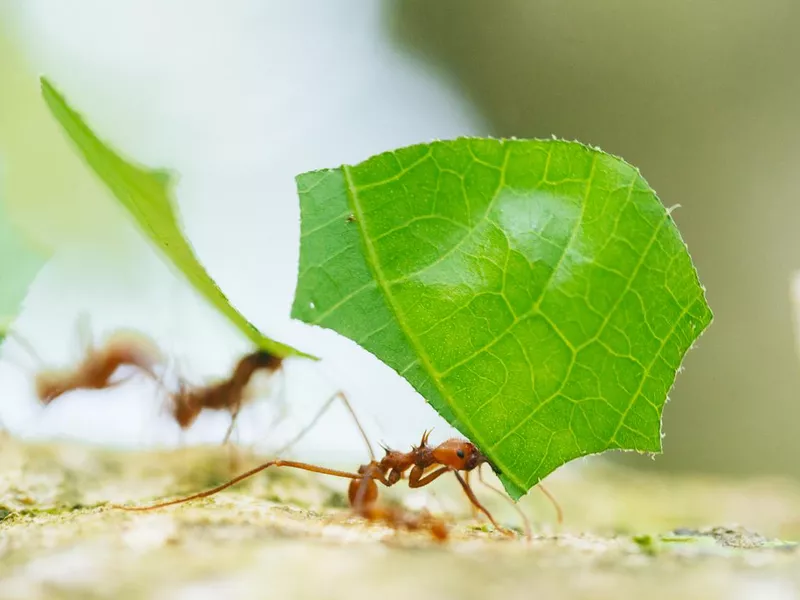
Boogich / Getty Images
Size: 2-2.5 mm
Lifespan: Several weeks to several years
Where to find them: South and Central America
Bottom Line: Leafcutter Ant

imv / Getty Images
For being such a small insect, the leafcutter ant has super-size strength. They can carry 50 times their body weight of 500 mg in their jaws. These sociable insects live in colonies and represent 15 to 25 percent of the animal biomass on the planet.
They communicate by using pheromones to alert other ants of danger or lead them to a food source.
Jaguar
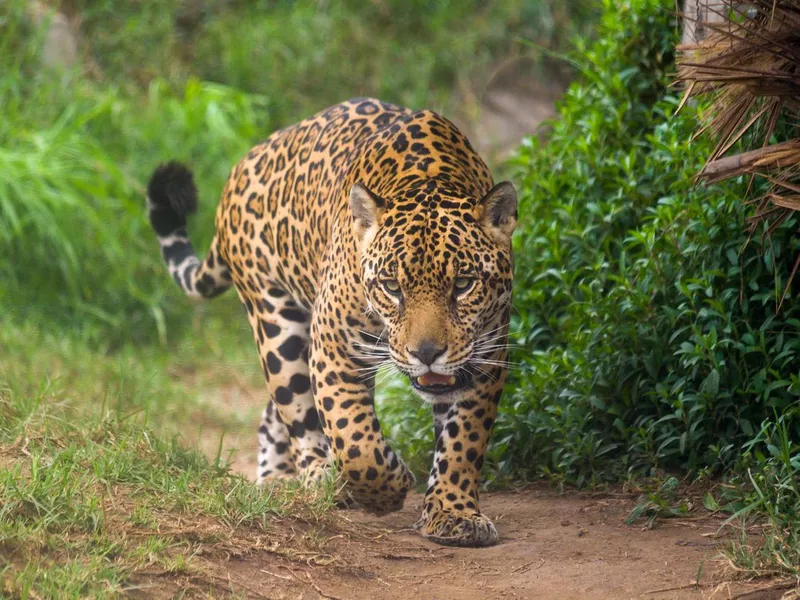
Christian Vinces / Getty Images
Size: 120-210 pounds
Lifespan: 12-15 years
Where to find them: Southwest U.S. and South America
Bottom Line: Jaguar
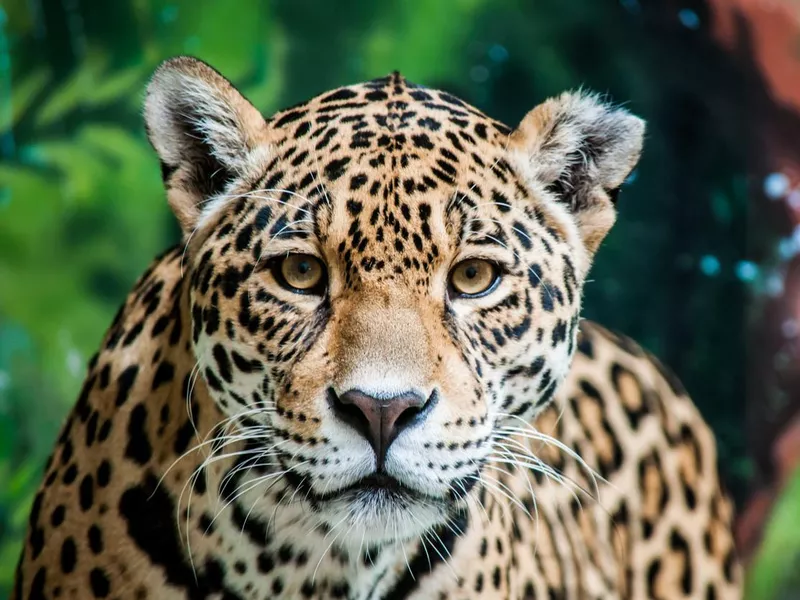
zemkooo / Getty Images
The third biggest cat in the world (after tigers and lions), the jaguar has the most powerful bite of all. Their strong jaw and razor-sharp teeth can easily bite through a crocodile’s tough skin or the hard shell of a turtle.
In addition, jaguars are good swimmers that usually live near wetlands and travel up to 6 miles a night searching for prey.
Rhinoceros Beetle

ruiruito / Getty Images
Size: Up to 6 inches
Lifespan: 3-6 months
Where to find them: Every continent except Antarctica
Bottom Line: Rhinoceros Beetle

ruiruito / Getty Images
One of the largest beetles on the planet, the rhinoceros beetle can lift 850 times their own weight.
Their natural predators are pigs, rats, ants and other beetles, and they hiss when they feel threatened!
Bactrian Camel

afhunta / Getty Images
Size: 1,000 pounds
Lifespan: 40 years
Where to find them: The Gobi Desert of Northwest China and Mongolia
Bottom Line: Bactrian Camel
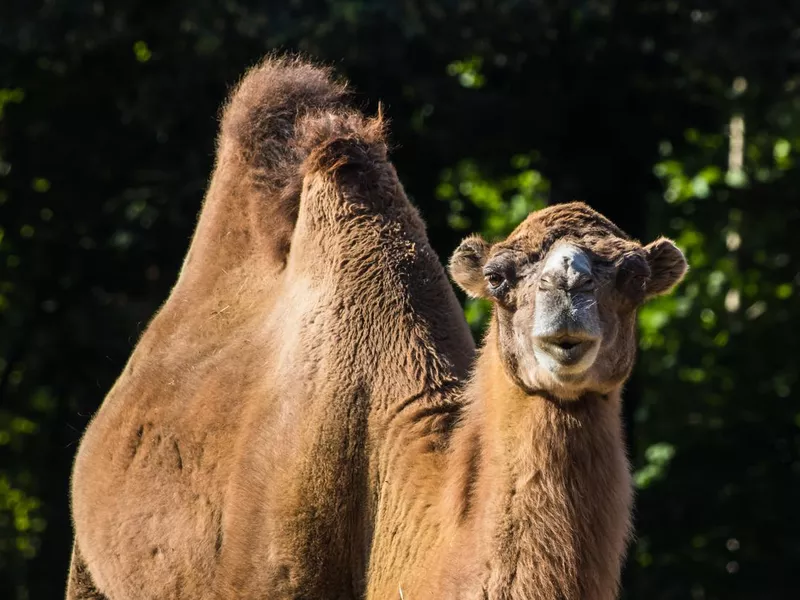
eugenki / Getty Images
These camels have a secret superpower; they can drink up to 15 gallons of water at one time and survive without water for 15 days. The fat stored in their humps is turned into energy, which is what allows them to go without water for so long.
Bactrian camels are incredibly strong creatures that can carry up to 900 pounds on their back for 25 miles per day. They also have sealable nostrils to stop sand from getting into their noses when traveling across the desert.
Arctic Fox
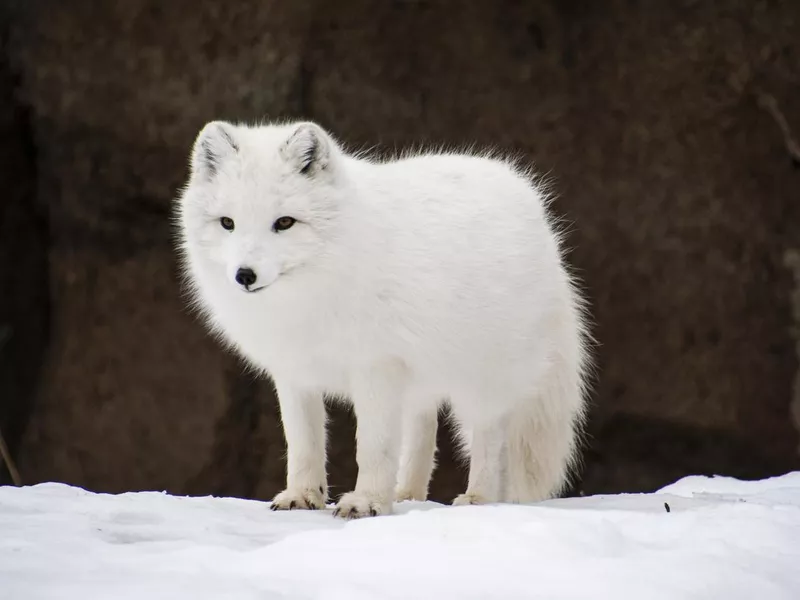
Dave Bosen / Getty Images
Size: 7-21 pounds (male); 3-7 pounds (female)
Lifespan: 3-6 years
Where to find them: Europe, Asia, North America, Greenland, Iceland
Bottom Line: Arctic Fox
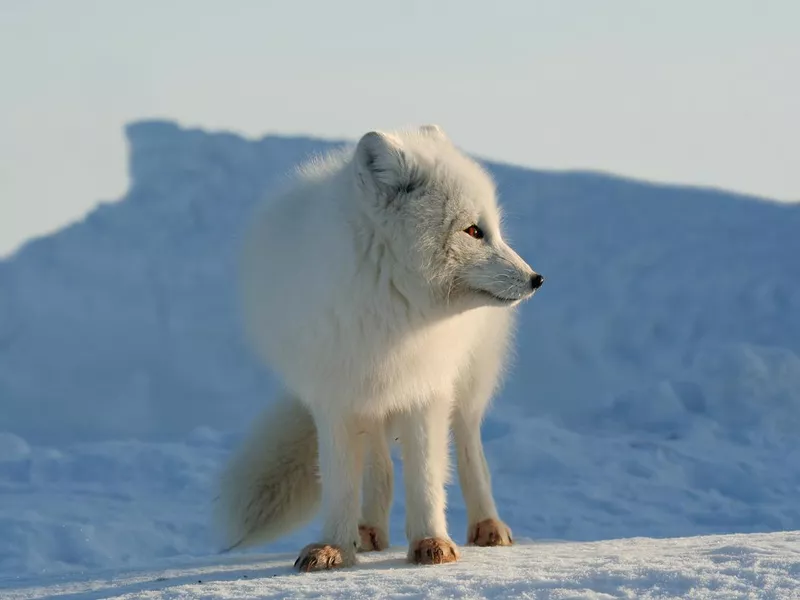
DmitryND / Getty Images
What classifies the Arctic fox as a strong animal is its adaptation to frigid temperatures, some as low as -58 Fahrenheit. Their bodies are built for chilly climates with their furry soles, short ears, dense fur and a layer of fat to retain heat.
The foxes live in dens and move throughout the year in search of food.
Mountain Goat
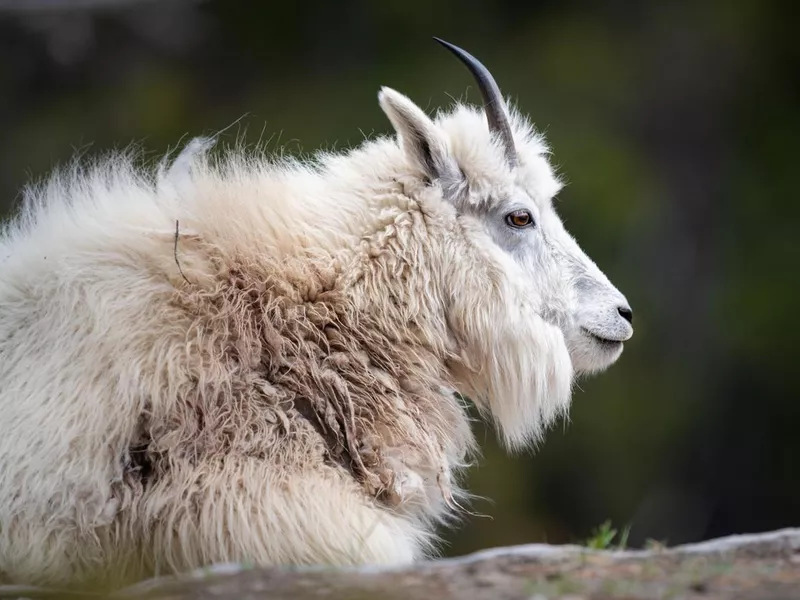
Jillian Cooper / Getty Images
Size: 260 pounds (male); 130-200 pounds (female)
Lifespan: 9-12 years
Where to find them: The Yukon and Alaska to Utah, but the majority are found in British Columbia
Bottom Line: Mountain Goat
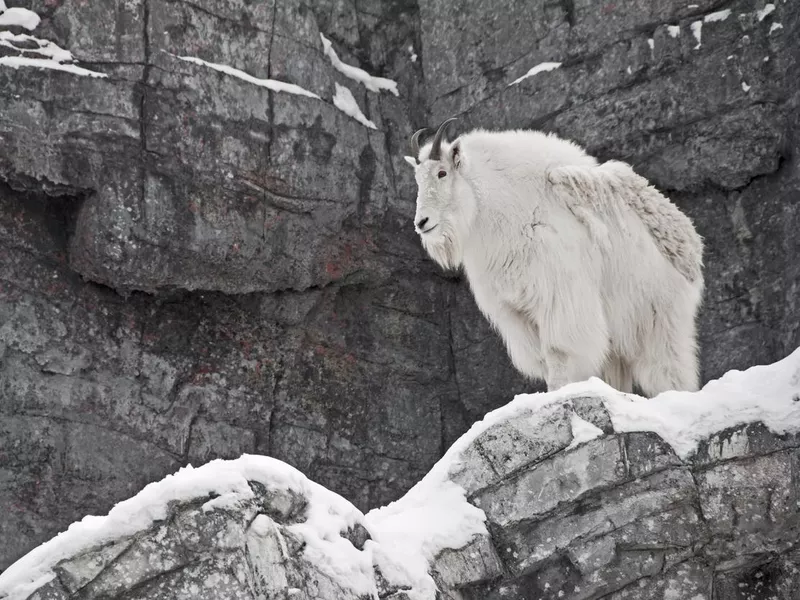
wwing / Getty Images
The mountain goat’s strength is found in its ability to balance on its nimble hooves and leap 12 feet in one jump. They can also survive in altitudes above 13,000 feet.
Surprisingly, they’re not in the same genus as goats but are instead part of the Bovidae family of antelopes, gazelles and cattle.
Honey Badger

Massimo_S8 / Getty Images
Size: 20-30 pounds (male); 11-22 pounds (female)
Lifespan: 7 years (in the wild)
Where to find them: Africa, Saudi Arabia, Iran and western Asia
Bottom Line: Honey Badger

compuinfoto / Getty Images
The Guinness Book of World Records ranks the honey badger as the most fearless creature on the planet. Like the skunk, the badger has a gland at the base of its tail that emits a smelly odor to mark its territory or to spray when it feels threatened.
They also have thick, rubbery skin that protects them from predators. These fierce critters have a mean temperament and will fight anyone, no matter their size.
Zebra
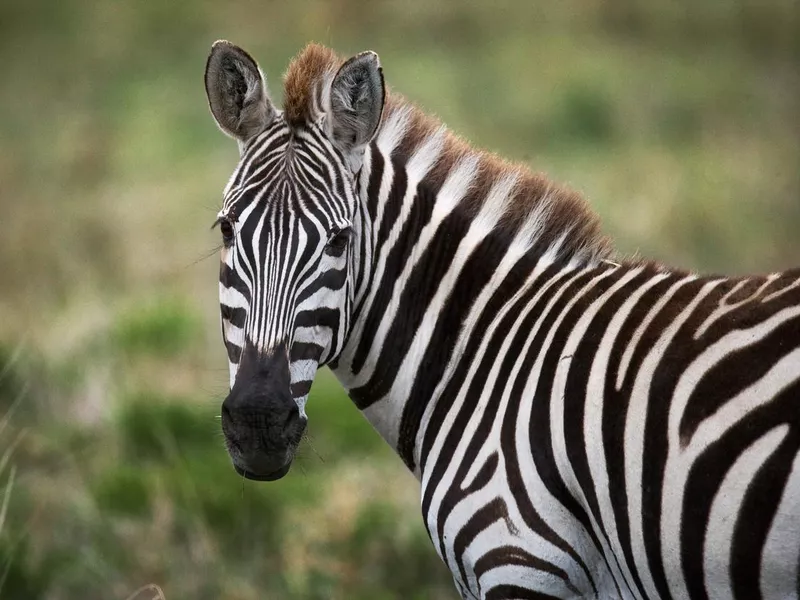
ANDREYGUDKOV / Getty Images
Size: 450-992 pounds (depending on species)
Lifespan: 25 years
Where to find them: Eastern and southern Africa
Bottom Line: Zebra
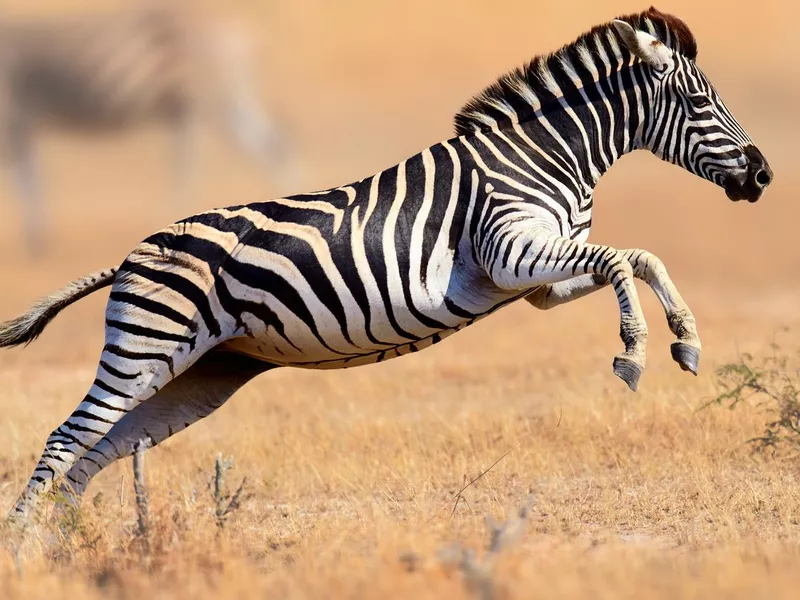
MariSwanepoel / Getty Images
Zebras can kick with 300 pounds of force, stronger than the kick of a kangaroo or a giraffe. If a zebra feels threatened, it can kill its predator with one kick.
They’re social animals that live in herds and communicate with one another through facial expressions, ear positioning and sounds.
Goliath Grouper
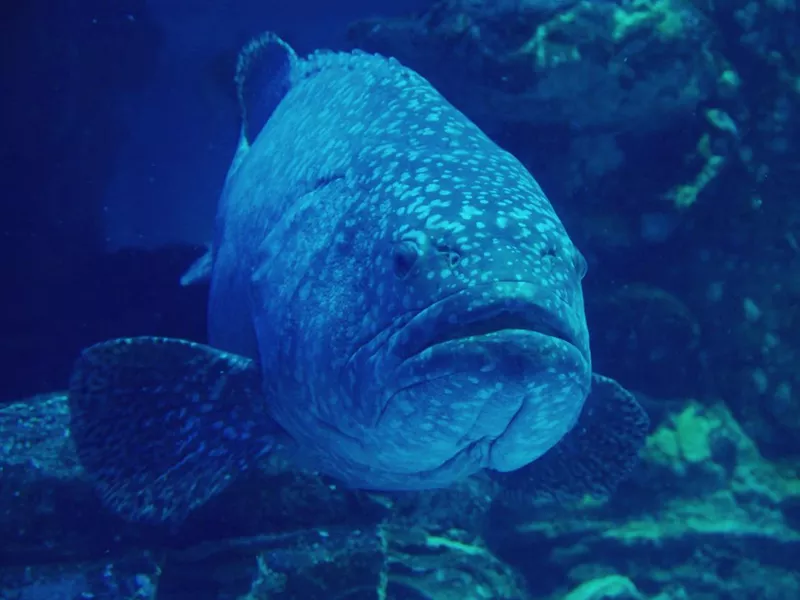
papa1266 / Getty Images
Size: 800 pounds (up to 8-feet long)
Lifespan: 37+ years
Where to find them: Gulf of Mexico, Florida Keys, Bahamas, most of the Caribbean, most of the Brazilian coast
Bottom Line: Goliath Grouper

cristianl / Getty Images
The goliath grouper earns the title of the strongest fish and the largest of all Atlantic groupers. Their superpower is their ability to live in brackish water and survive on low oxygen levels.
Although this giant grouper has teeth, they tend to swallow their prey whole. They’re also quite fearless, willing to attack sharks, octopuses, sea turtles and barracudas.
Polar Bear

KenCanning / Getty Images
Size: 990 pounds (male); 330-550 pounds (female)
Lifespan: 25 years
Where to find them: U.S., Alaska, Canada, Russia, Greenland, Norway
Bottom Line: Polar Bear

FRANKHILDEBRAND / Getty Images
Next to its grizzly bear subspecies, the polar bear is the largest and most powerful carnivore on land. They have sharp claws that are 1.9 inches long and strong teeth with a bite force of 1,200 pounds per square inch.
Because of the polar bear’s massive size, it can take down any animal with one swipe of its paw.
White Rhinoceros
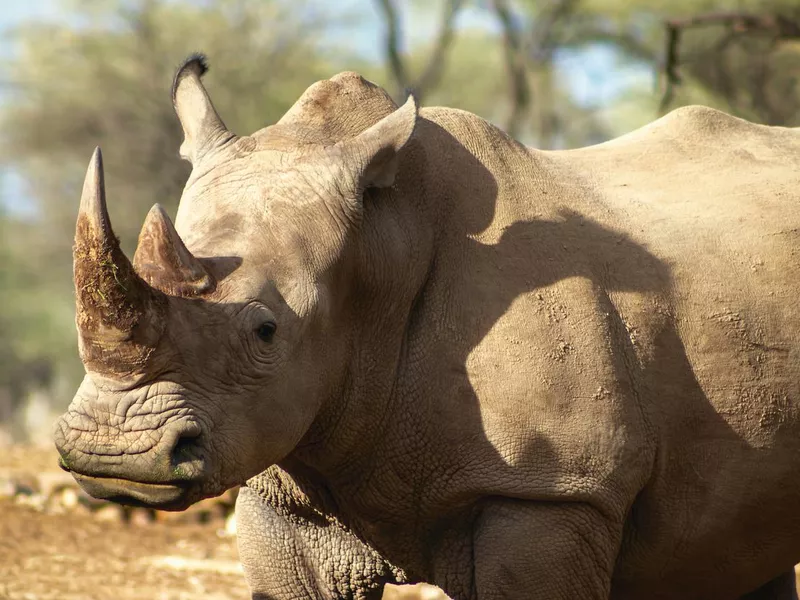
YULIIA LAKEIENKO / Getty Images
Size: 3,080-7,920 pounds
Lifespan: 40-50 years
Where to find them: South Africa, Namibia, Zimbabwe, Kenya
Bottom Line: White Rhinoceros
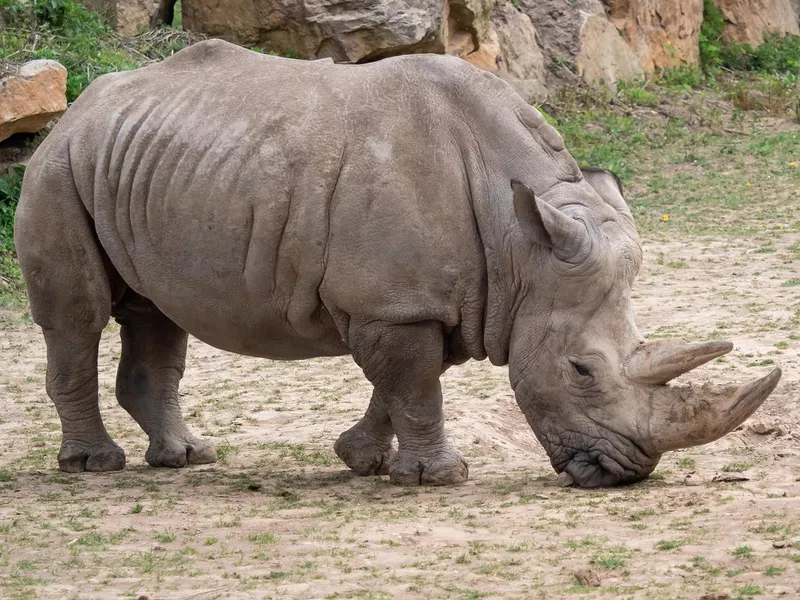
xtrekx / Getty Images
The white rhinoceros is the second-largest land mammal (after the elephant) and is critically endangered due to years of poaching for their horns. These giant creatures have toes that can withstand peak pressures of 75-plus pounds per square inch and can run up to 25 mph for short periods at a time.
They have poor eyesight but an incredibly sharp sense of smell and use their horns to attack predators.
Black Mamba

Nicole_Marschall / Getty Images
Size: Up to 14-feet long
Lifespan: 11+ years
Where to find them: Sub-Sahara Africa
Bottom Line: Black Mamba

through-my-lens / Getty Images
What makes the Black Mamba so powerful is its poisonous venom, the fastest acting of all snake venoms in the world. Their fangs are 6.5-millimeters long, and each tooth releases 12 to 20 drops of paralysis-inducing poison.
As a result, they can kill large animals like the elephant within a few hours and take down a human with just two drops of venom.
Deathstalker Scorpion

Lastovetskiy / Getty Images
Size: 4 inches
Lifespan: 4-25 years
Where to find them: North Africa and desert areas of the Middle East
Bottom Line: Deathstalker Scorpion
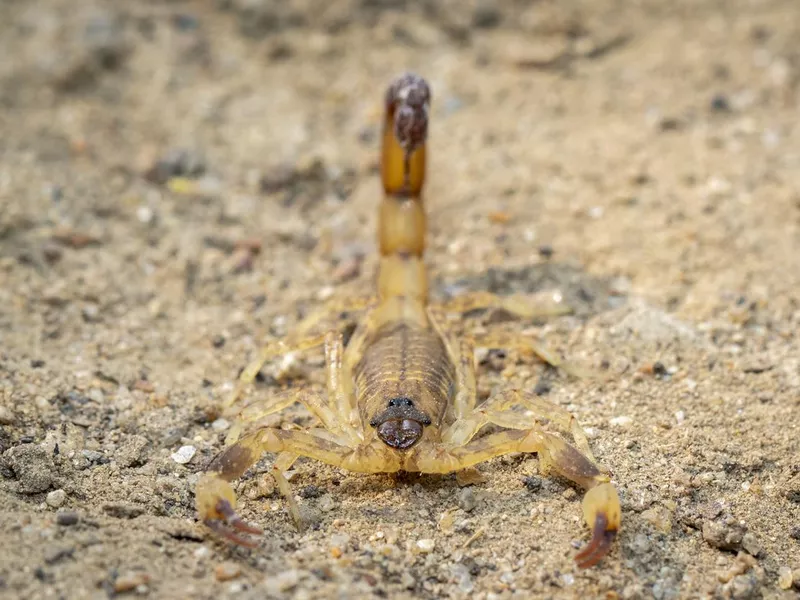
yod67 / Getty Images
This scorpion earned its name from a large number of toxins in its venom.
A deathstalker scorpion sting can be fatal to humans of advanced age or young infants if antivenom is not administered, causing death within two to seven hours.
Hippopotamus

Heatherfaye / Getty Images
Size: 3,300-4000 pounds (male); 2,900-3,300 pounds (female)
Lifespan: 36-40 years
Where to find them: Africa
Bottom Line: Hippopotamus
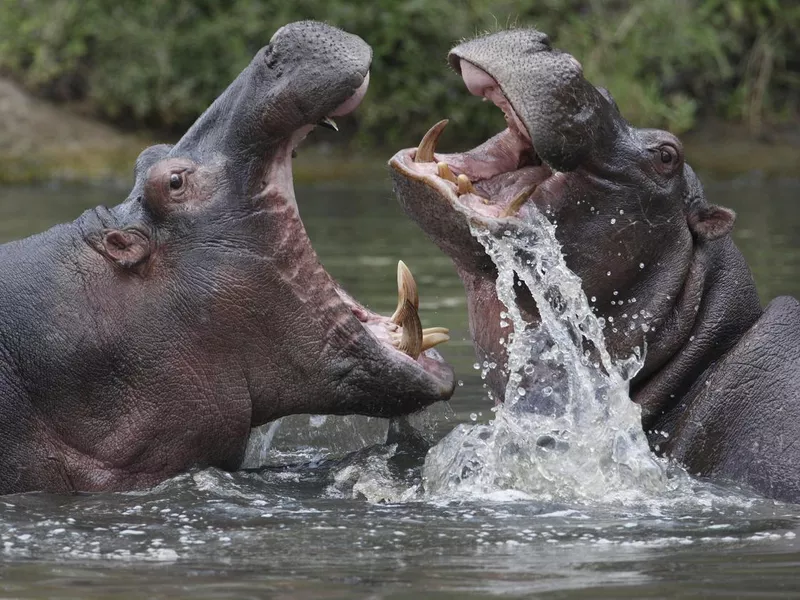
GP232 / Getty Images
Hippos have the most substantial bite of any herbivore on the planet. They are considered the third biggest and most dangerous animal in Africa. Their strength is in their jaw with a bite force of 2,000 pounds per square inch.
The hippopotamus spends most of its time in the water since its uniquely dry skin needs to stay hydrated. They are considered territorial and aggressive, which makes them highly dangerous if they feel threatened.